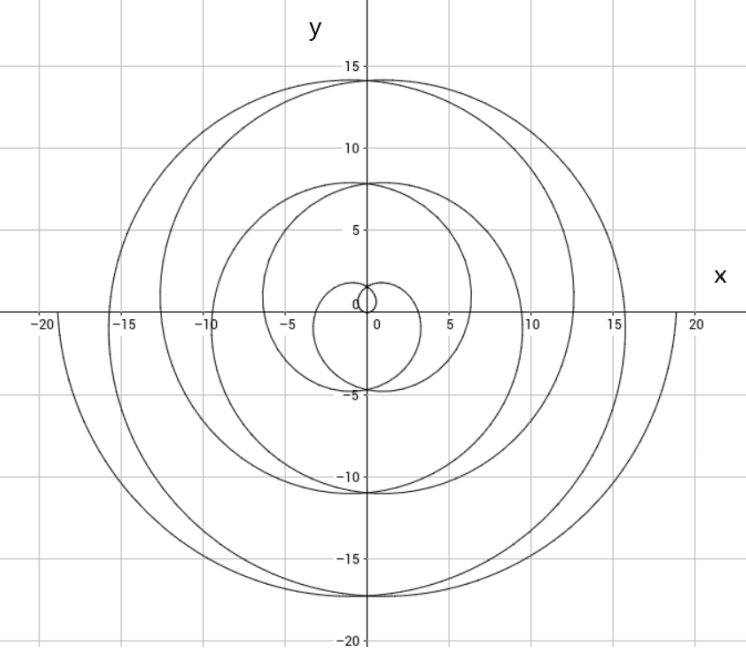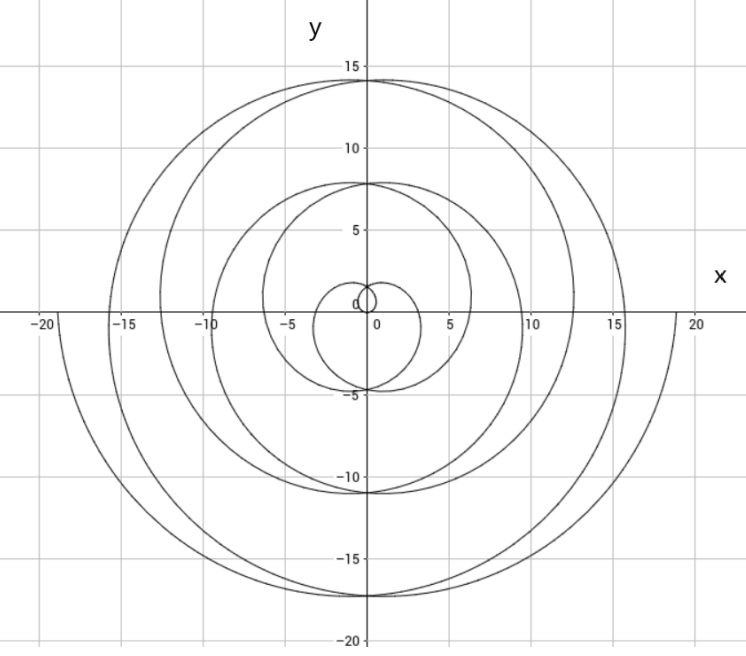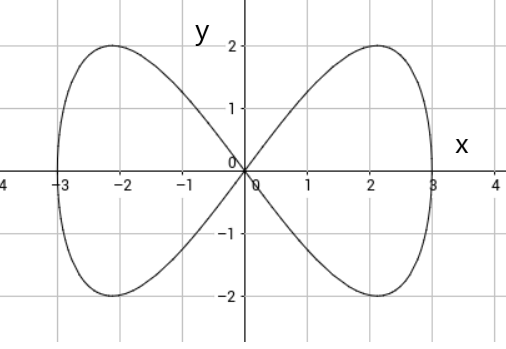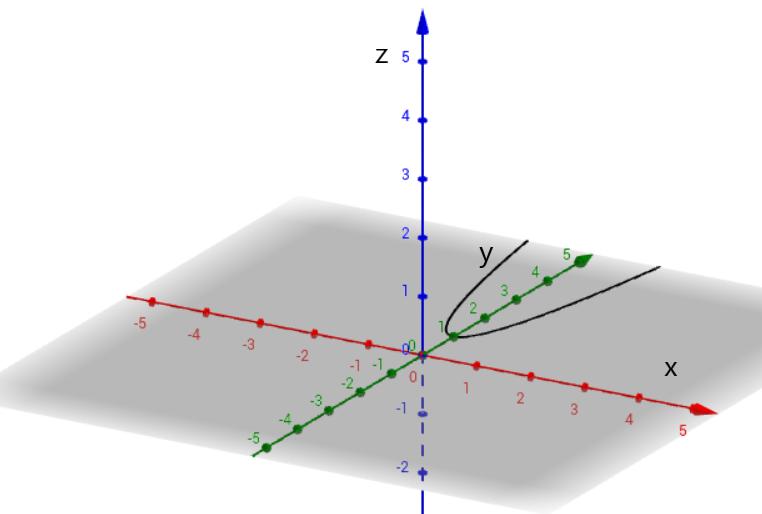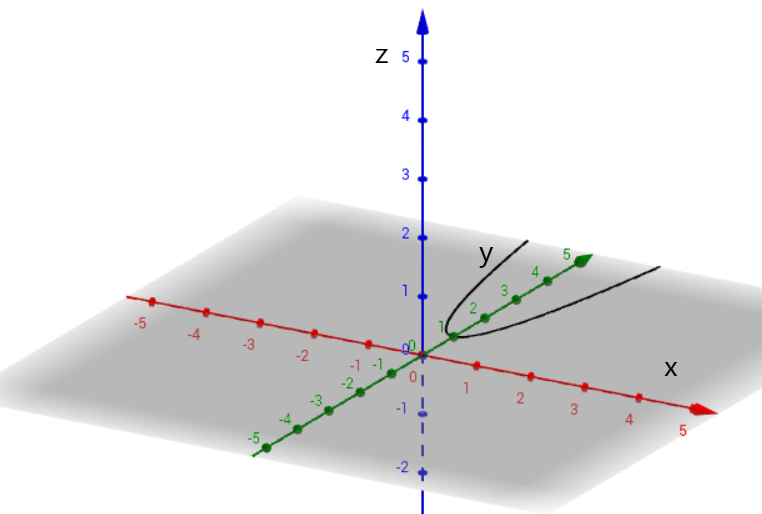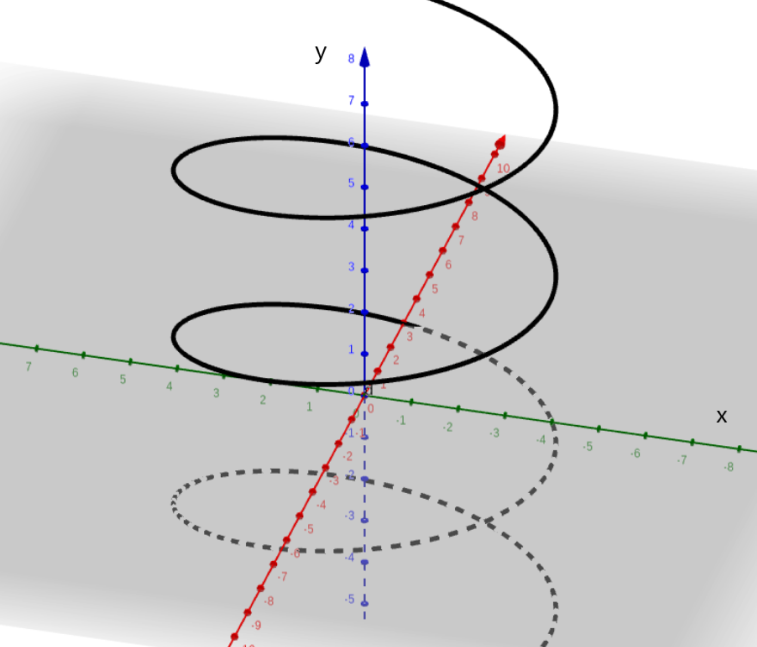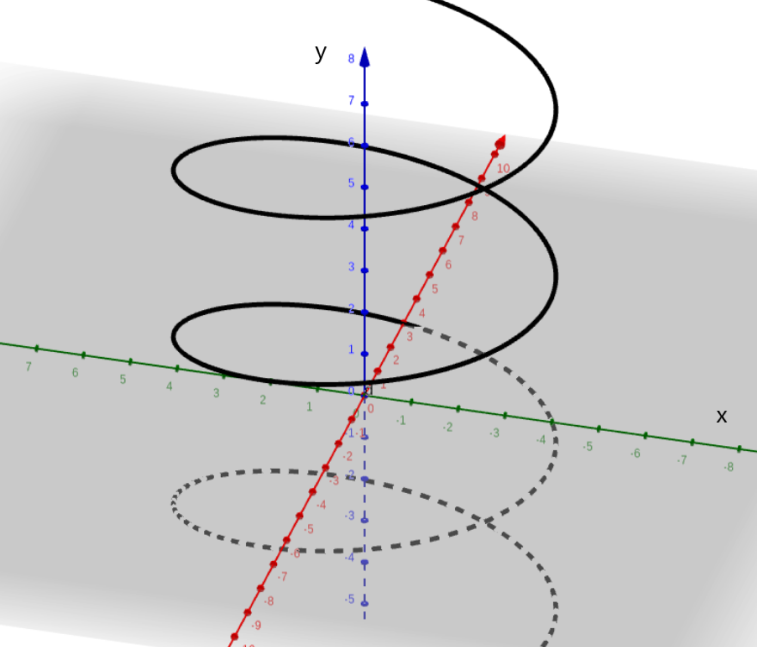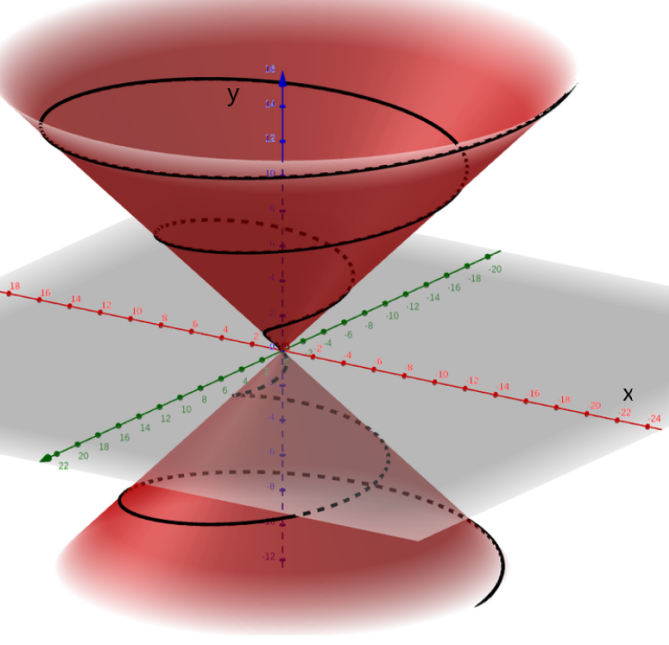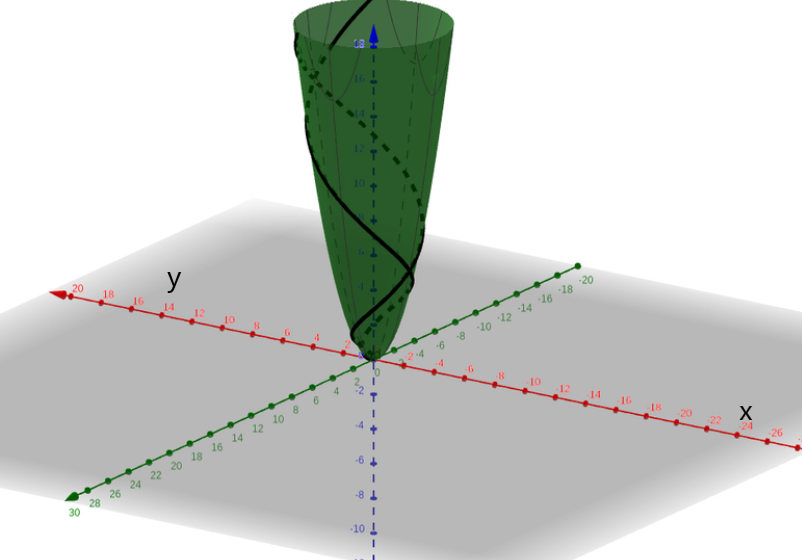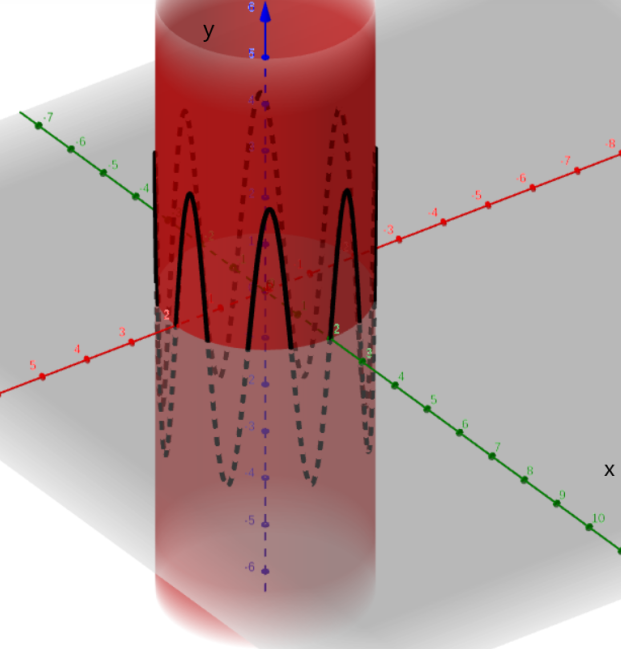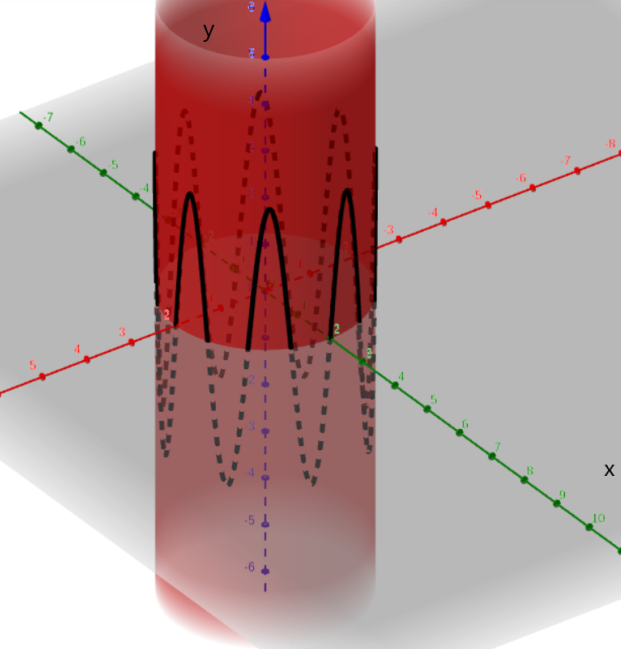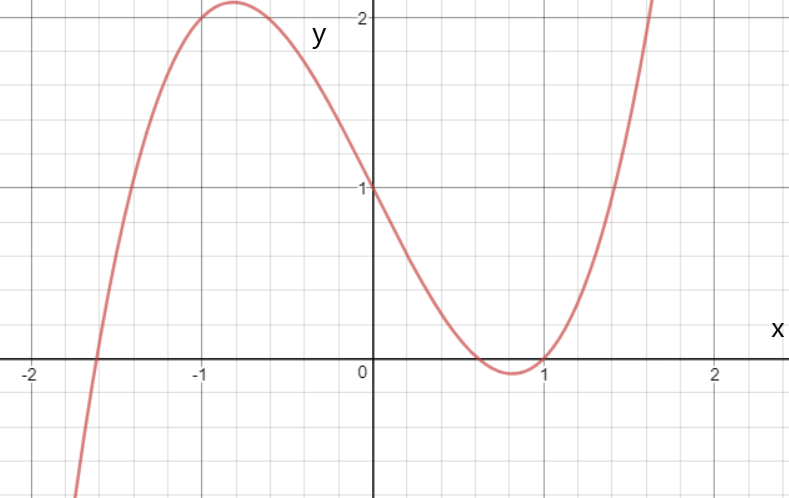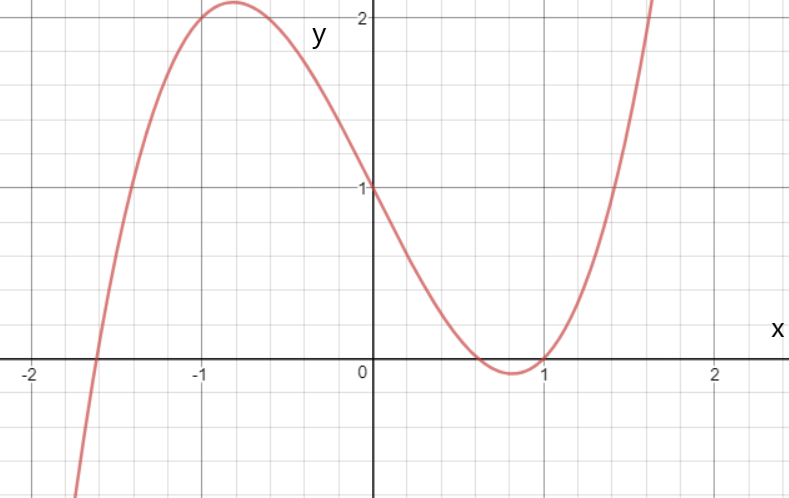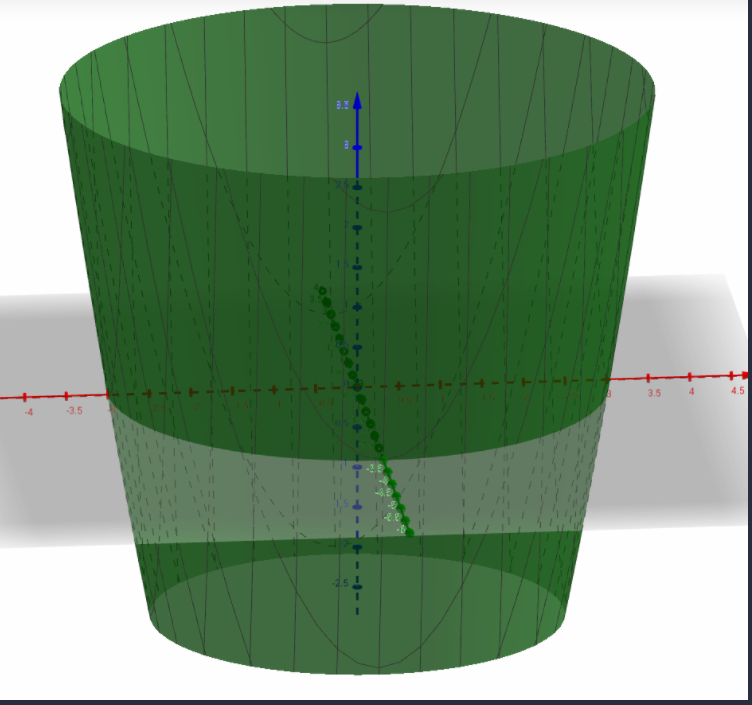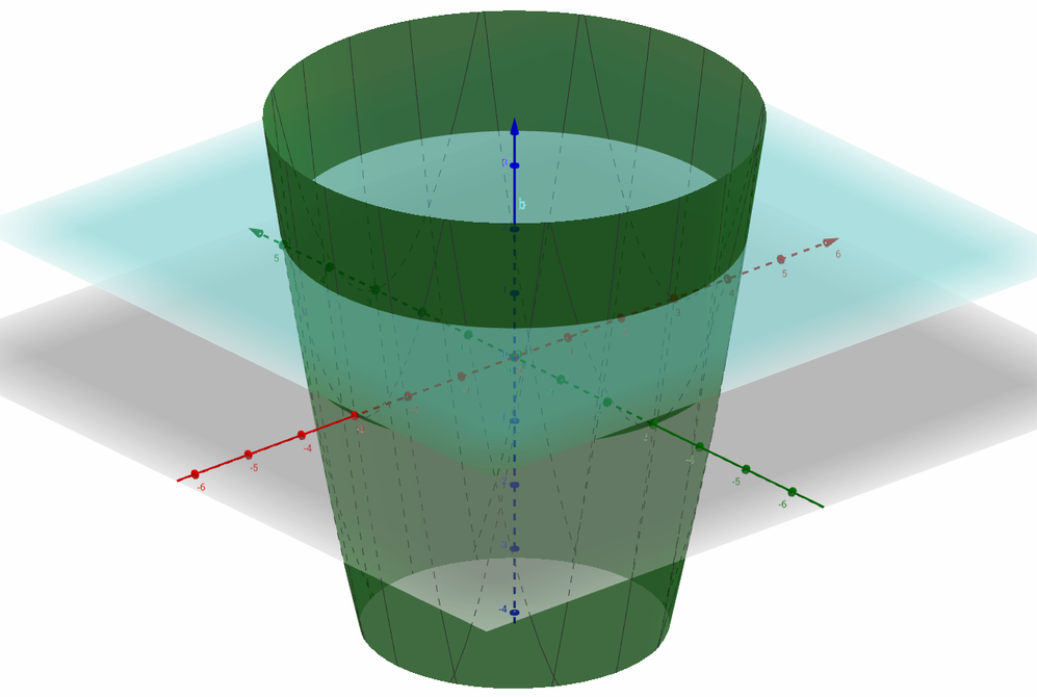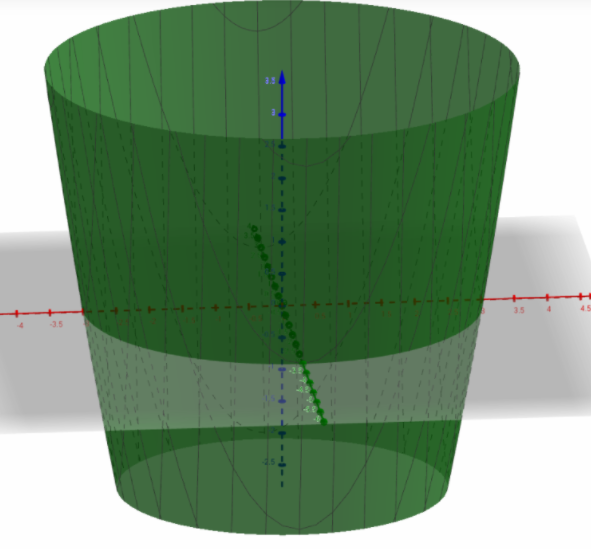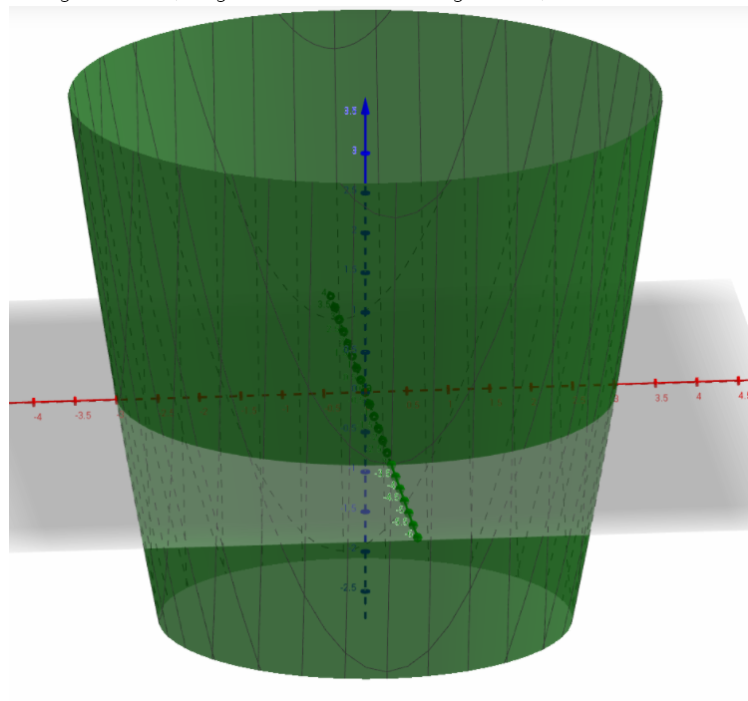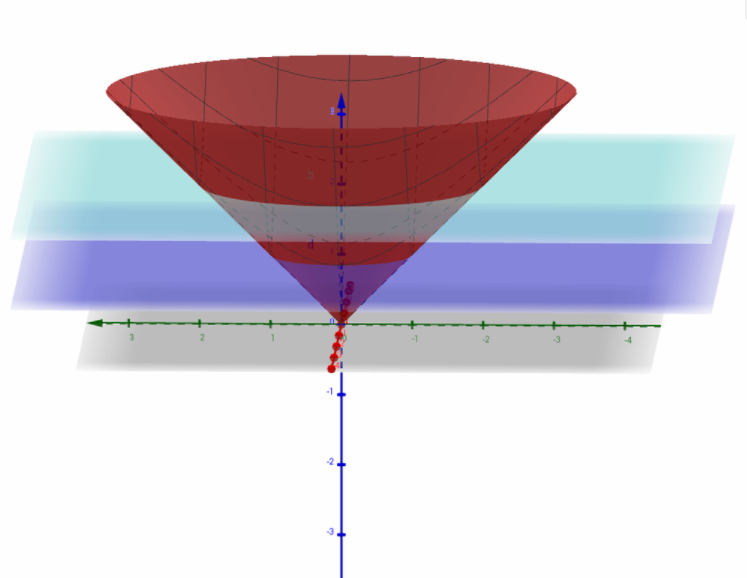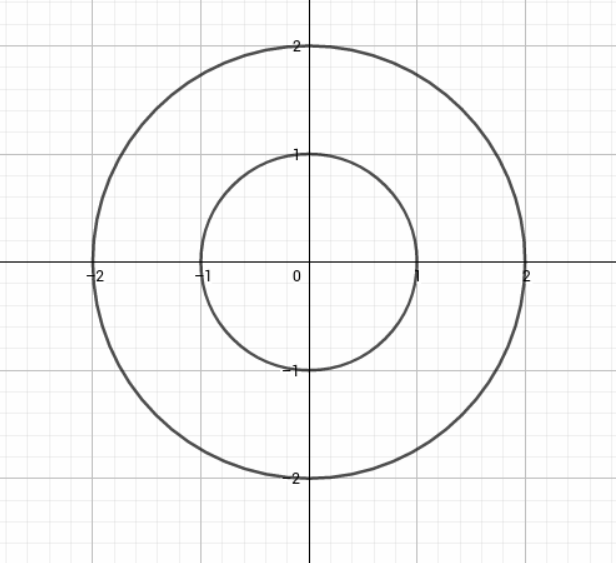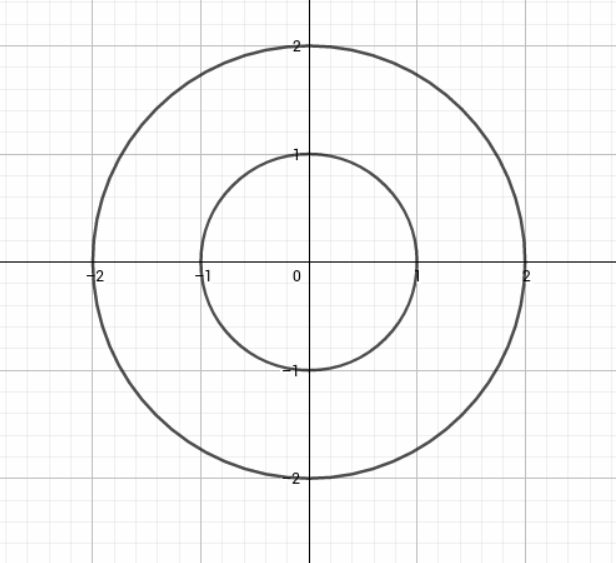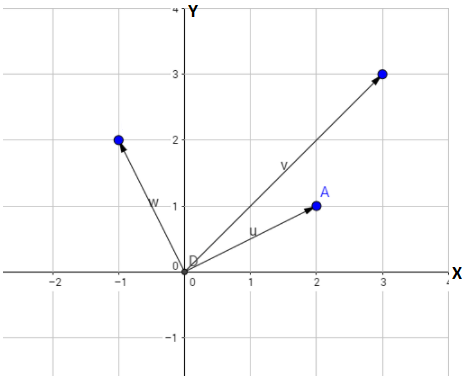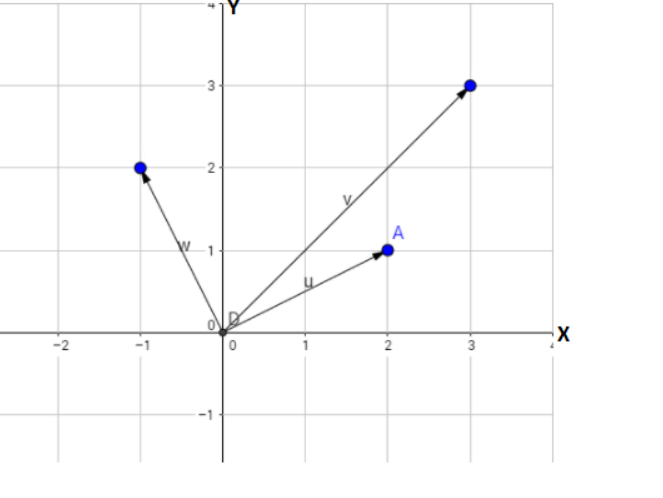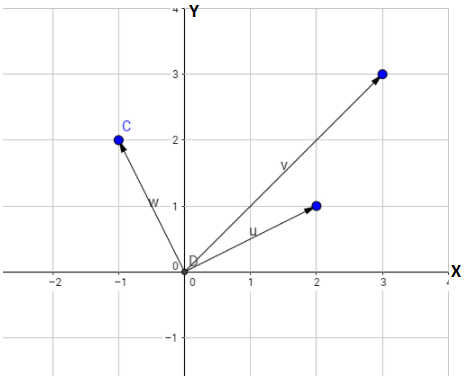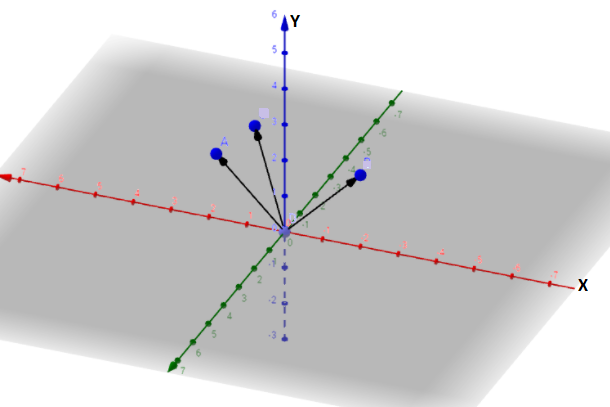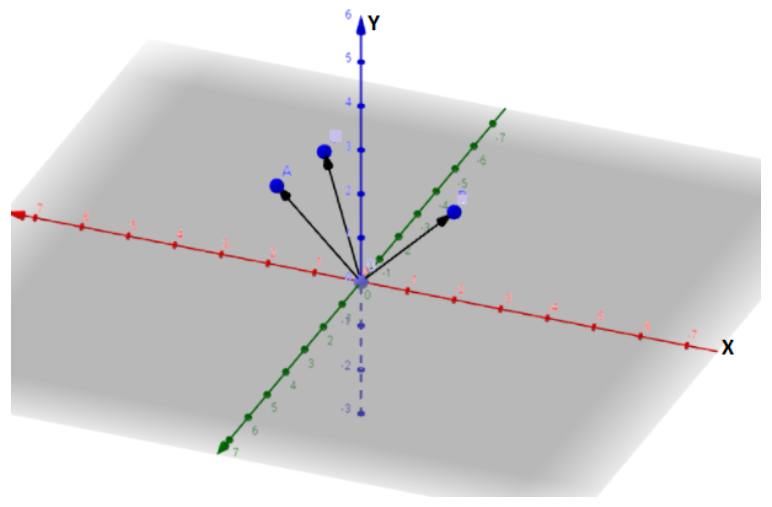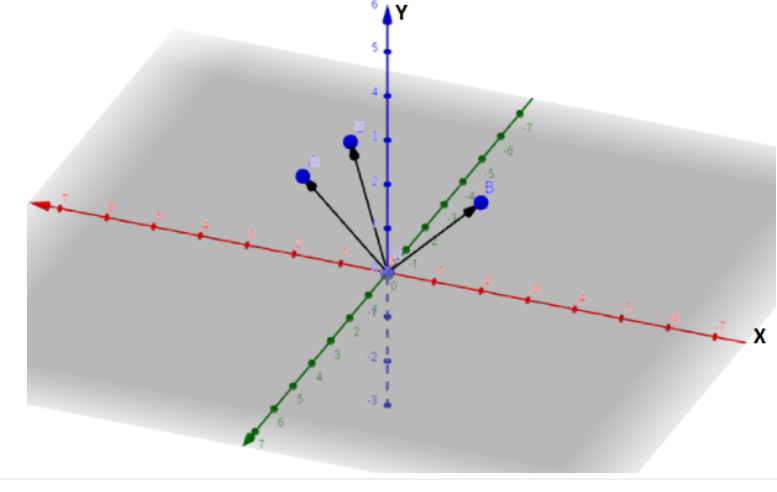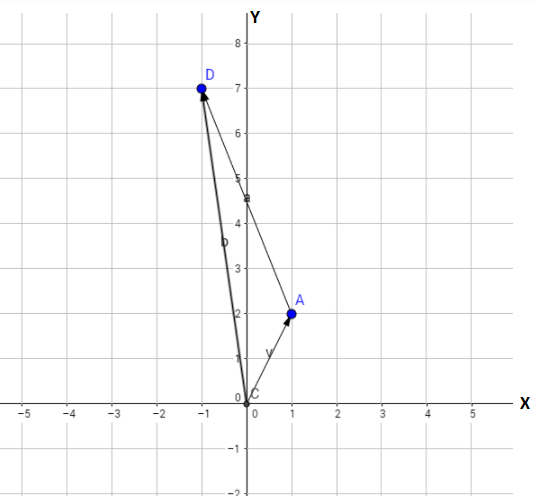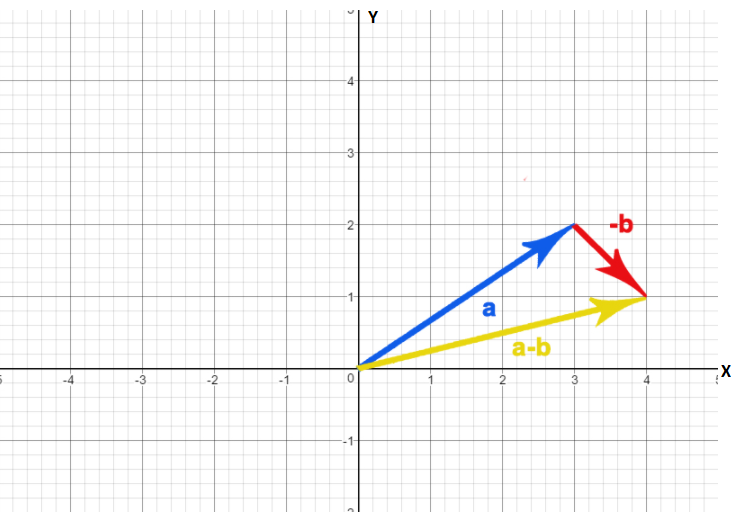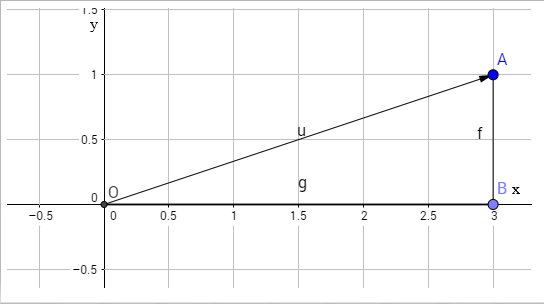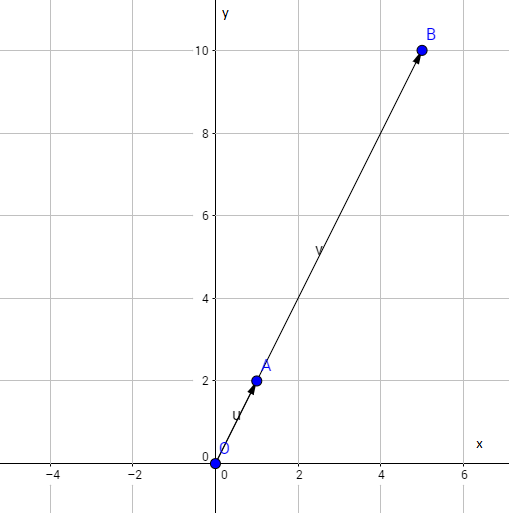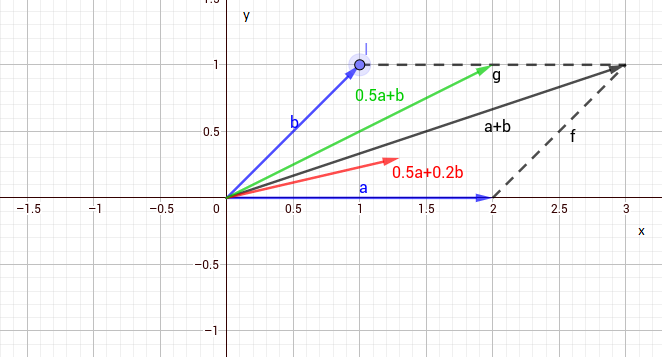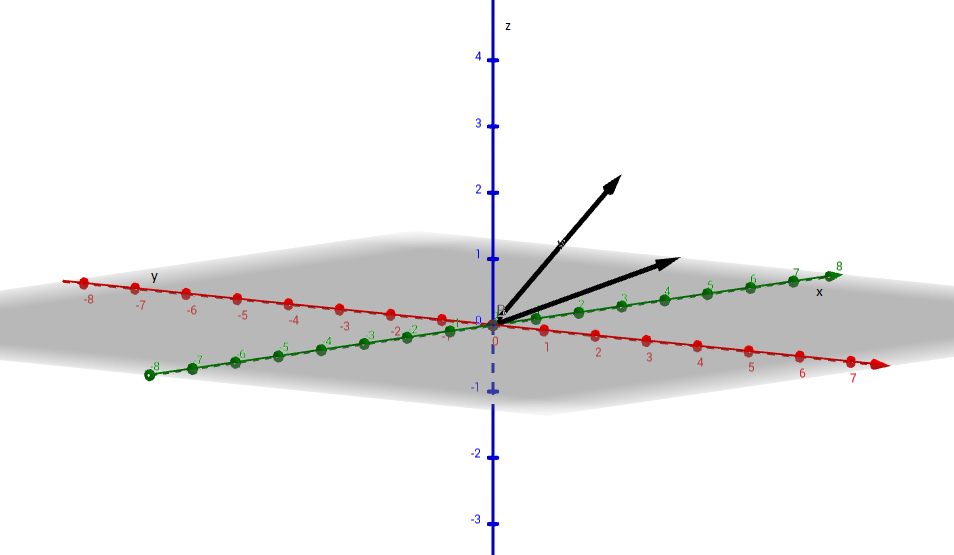Susan Colley Vector Calculus 4th Edition Chapter 6 Line Integrals
Page 426 Problem 1 Answer
Given: The function f(x,y)=x+2y
To Find: Evaluate scalar line integral of x(t)=2−3t,4t−1,0≤t≤2
Evaluate to get the final result.
Let (x,y) = x + 2y.
Let x(t) = (2-3t, 4t – 1), 0 ≤ t ≤ 2
We have that f(x) = f(2 – 3t, 4t – 1) = (2 – 3t) + 2(4t – 1) = 2 – 3t + 8t – 2 = 5t
for all 0 ≤ t ≤ 2 and
x'(t) = (-3,4) for all 0 ≤ t ≤ 2
Which gives us that
⇒ \(\left\|\mathbf{x}^{\prime}(t)\right\|=\sqrt{(-3)^2+4^2}=\sqrt{9+16}=\sqrt{25}=5\)
for all. 0 ≤ t ≤ 2
Thus,
⇒ \(\int_{\mathbf{X}} f d s=\int_0^2 f(\mathbf{x}(t))\left\|\mathbf{x}^{\prime}(t)\right\| d t\)
= \(\int_0^2(5 t) \cdot 5 d t=\int_0^2 25 t d t\)
= \(\left.\frac{25 t^2}{2}\right|_0 ^2\)
= \(\frac{25 \cdot 2^2}{2}-\frac{25 \cdot 0^2}{2}\)
= 50 – 0 = 50.
The required solution is 50.
Page 426 Problem 2 Answer
Given: The functionf(x,y)=x+2y.
To Find: Evaluate scalar line integral of x(t)=(cost,sint),0≤t≤π.
Evaluate to get the final result.
Let f(x,y) =x + 2y.
Let x(t) = (cos t, sin t), 0 ≤ t ≤ π.
We have that f(x(t)) = f (cost, sin t) = cos t + 2 sin t for all 0 ≤ t ≤ π and
x'(t) = (-sint, cos t) for all 0 ≤ t ≤ π which gives us that
⇒ \(\left\|\mathbf{x}^{\prime}(t)\right\|=\sqrt{(-\sin t)^2+(\cos t)^2}=\sqrt{\sin ^2 t+\cos ^2 t}=\sqrt{1}=1 \text { for all } 0 ≤ t ≤ \pi\)
Thus,
⇒ \(\int_{\mathbf{x}} f d s=\int_0^\pi f(\mathbf{x}(t))\left\|\mathbf{x}^{\prime}(t)\right\| d t\)
= \(\int_0^\pi(\cos t+2 \sin t) \cdot 1 d t=\int_0^\pi(\cos t+2 \sin t) d t\)
= \((\sin t-2 \cos t)_0^\pi=(\sin \pi-2 \cos \pi)-(\sin 0-2 \cos 0)\)
= (0-2.(1)) – (0-2.1) = 2 – (-2)
= 4.
The required solution is 4.
Read and Learn More Susan Colley Vector Calculus Solutions
Page 426 Problem 3 Answer
Given: The expressionf(x,y,z)=xyz,x(t)=(t,2t,3t),0≤t≤2
To Find: ∫x fds, where f and x are as indicated.
Evaluate to get the final result.
Recal the way that we evaluate the line integral of a scalar field. First, for the given curve:
x = (t, 2t, 3t), t ∈ [0,2]
we find its derivative x’ = (1,2,3) ⇒ ||x|| = √14
Next, recall that the integral is evaluated by the formula:
⇒ \(\int_{\mathbf{x}} f d s=\int_a^b f(\mathbf{x})\|\mathbf{x}\| d t\)
where [a,b] is the segment on which we are considering the curve.
That is this is the segment on which the curve is, given.
Finally, we evaluate the integral
⇒ \(\int_0^2 \sqrt{14} f(t, 2 t, 3 t) d t=\sqrt{14} \int_0^2 6 t^3 d t\)
= 24√14
The required solution is 24√14
Page 426 Problem 4 Answer
Given : The expression is f(x,y,z)=x+z/y+z,
x(t)=(t,t,t3/2),1≤t≤3
To Find: Calculate the expression .
Evaluate the question to get the answer.
Let us evaluate the line integral of a scalar field.
First, for the given curve: x=(t,t,t3/2),t∈[1,3]
We find its derivative x′=(1,1,3/2√t)
⇒∥x∥=1/2√9t+8
Next, recall that the integral is evaluated by the formula:
⇒ \(\int_{\mathbf{x}} f d s=\int_a^b f(\mathbf{x})\|\mathbf{x}\| d t\)
Where [a,b] is the segment on which we are considering the curve, that is the segment on which the curve is given.
Finally, we evaluate the integral:
⇒ \(\int_1^3 f(\mathbf{x}) \frac{1}{2} \sqrt{9 t+8} d t=\frac{1}{2} \int_1^3 \sqrt{9 t+8} d t\)
= \(\frac{35 \sqrt{35}-17 \sqrt{17}}{27}\)
Calculating fx/fds we get 35√35 −17√17/27.
Page 426 Problem 5 Answer
Given : The function is f(x,y,z)=3x+xy+z3,
x(t)=(cos4t,sin4t,3t),0≤t≤2π
To Find: Calculate the function.
Evaluate the question to get the answer .
Recall the way that we evaluate the line integral of a scalar field.
First, for the given curve:
x(t)=(cos4t,sin4t,3t),t∈[0,2π]
We find its derivative x′(t)=(−4sin4t,4cos4t,3)
⇒∥x(t)∥=5
Next, recall that the integral is evaluated by the formula:
⇒ \(\int_{\mathbf{x}} f d s=\int_a^b f(\mathbf{x})\|\mathbf{x}\| d t\)
where [a,b] is the segment on which we are considering the curve, that is the segment on which the curve is given.
Finally, we evaluate the integral:
⇒ \(\int_{\mathbf{x}} f d s=\int_0^{2 \mathrm{~T}} f(\mathbf{x}(t))\|\mathbf{x}\| d t\)
= \(5 \int_0^{2 \pi}\left(3 \cos 4 t+\frac{\sin 8 t}{2}+27 t^3\right) d t\)
= \(\left.5\left(\frac{3 \sin 4 t}{4}-\frac{\cos 8 t}{16}+\frac{27 t^4}{4}\right)\right|_0 ^{2 \pi}\)
= 540 π4
Calculating the function f{x}fds we get, 540π4.
Page 426 Problem 6 Answer
Given : The function is f(x,y,z)=z x2+y2,
x(t)=(e2tcos3t,e2tsin3t,e2t),0≤t≤5.
To Find: Calculate the integral.
Evaluate he function to get the answer.
Recall the way that we evaluate the line integral of a scalar field.
First, for the given curve:
x(t)=(e2tcos3t,e2tsin3t,e2t),t∈[0,5]
We find its derivative x′(t)=(2e2tcos3t−3e2tsin3t,2e2tsin3t+3e2tcos3t,2e2t)
From here we find∥x∥:∥x∥=√17e2t
Next, recall that the integral is evaluated by the formula:
⇒ \(\int_{\mathbf{x}} f d s=\int_a^b f(\mathbf{x})\|\mathbf{x}\| d t\)
where [a,b] is the segment on which we are considering the curve, that is the segment on which the curve is given.
Finally, we evaluate the integral:
⇒ \(\int_0^5 \frac{e^{2 t}}{e^{4 t} \cos ^2 3 t+e^{4 t} \sin ^2 3 t} \cdot \sqrt{17} e^{2 t} d t=\int_0^5 \frac{1}{e^{2 t}} \sqrt{17} e^{2 t} d t\)
= 5√17
Calculating the integral∫xfds we get,5√17.
Page 426 Problem 7 Answer
Given : The function is f(x,y,z)=x+y+z,
x(t)={(2t,0,0)if0≤t≤1
(2,3t−3,0)if1≤t≤2
(2,3,2t−4)if2≤t≤3}
To Find: Calculate the function fx fds
Evaluate the question to get the answer .
Let us denote each of the 3 pieces of the curve with γ1,γ2and γ3respectively to ease the calculations.
The integral over the piecewise curve is the sum of integrals over every piece.
The function we are integrating is f(x,y,z)=x+y+z
Now,γ1′(t)=(2,0,0)
⇒ ||γ1|| = 2
⇒ \(\int_0^1 2 f\left(\gamma_1(t)\right) d t=\int_0^1 2 \cdot(2 t+0+0) d t\)
Next, we move on to the second piece:
||γ2|| = 2
⇒ \(\int_1^2 3 f\left(\gamma_2(t)\right) d t=\int_1^2 3 \cdot(2+3 t-3+0) d t\)
= \(\frac{21}{2}\)
The third piece is:
||γ3|| = 2
⇒ \(\int_2^3 2 f\left(\gamma_3(t)\right) d t=\int_2^3 2 \cdot(2+3+2 t-4) d t\)
= 12
Now, adding everything together we get \(\frac{49}{2}\).
Calculating fxfds we get 49/2.
Page 426 Problem 8 Answer
Given : The function is \text { 7. }f(x,y,z)=2x−y1/2+2z2
x(t)={(t,t2,0)if0≤t≤1(1,1,t−1)if1≤t≤3
To Find: Calculate the function.
Evaluate the question to get the answer.
Once again we split the curve into two pieces and evaluate their norm to calculate 2 piecewise integrals.
The sum of the two integrals we will obtain will be the final result,
The first piece of the curve can be parametrized with:
γ1(t)=(t,t2,0),t∈[0,1]⇒γ1′(t)=(1,2t,0)
From the derivative above we find the norm:
∥γ1∥=√1+4t2
Finally, we calculate the integral over the first piece:
⇒ \(\int_0^1 f\left(\gamma_1(t)\right) d t=\int_0^1 t \sqrt{1+4 t^2} d t\)
= \(\left.\frac{\left(1+4 t^2\right)^{3/2}}{12}\right|_0 ^1\)
= \(\frac{5 \sqrt{5}-1}{12}\)
The second piece is given with:
γ2(t) = (1,1, t-1)
⇒ γ2(t) = (0,0,1)
The norm of the derivative is:
||γ2|| = 1
Finally, we calculate:
⇒ \(\int_1^3 2-1+2 t^2-4 t+2 d t=9-\frac{5}{3}\)
Therefore, the final result is 5√5−1/12+9−5/3 =5√5+87/12.
Page 426 Problem 9 Answer
Given: The function isF=xi+yj+zk,
x(t)=(2t+1,t,3t−1),0≤t≤1.
To Find: Calculate the function.
Evaluate the question to get the answer.
LetF(x,y,z)=xi+yj+zk and letx(t)=(2t+1,t,3t−1),0≤t≤1
We have that F(x(t))=(2t+1)i+tj+(3t−1)k and x′(t)=(2,1,3)for all 0≤t≤1
which gives us that F(x(t))⋅x′(t)=(2t+1)⋅2+t⋅1+(3t−1)⋅3
=4t+2+t+9t−3
=14t−1 for all 0≤t≤1
Thus, \(\int_{\mathbf{x}} \mathbf{F} \cdot \mathrm{d} \mathbf{s}=\int_0^1 \mathbf{F}(\mathbf{x}(t)) \cdot \mathbf{x}^{\prime}(t) d t\)
= \(\int_0^1(14 t-1) d t\)
= \(\left.\left(7 t^2-t\right)\right|_0 ^1\)
= (7. 12 – 1) – (7. 02 – 0)
= (7-1) – (0 – 0)
= 6
Calculating the function we get, ∫xF⋅ds=6.
Page 426 Problem 10 Answer
Given : The function isF=(y+2)i+xj,x(t) =(sint,− cost t),0≤t≤π/2
To Find: Calculate the function.
Evaluate the question to get the answer.
Recall the way we calculate the path integral of the given vector field.
For the sake of easier notation, if we are given the field.
F=a(x,y,z)i+b(x,y,z)j+c(x,y,z)k
where a,b,c are some scalar functions, we will write it down asF=(a(x,y,z),b(x,y,z),c(x,y,z)).
The path we are integrating over is: x(t)=(sint,−cost),t∈[0,π2]
Its derivate is:
x'(t) = (cos t, sin t)
Finally we use the formula for evaluating the path integral of the second kind:
⇒ \(\int_{\mathbf{x}} \mathbf{F} \cdot d s=\int_a^b \mathbf{F}(\mathbf{x}(t)) \cdot \mathbf{x}^{\prime}(t) d t\)
The field F is given in the task, so plugging everything into the formula we get:
⇒ \(\int_0^{\frac{\pi}{2}}(-\cos t+2) \cos t+\sin t \sin t=\int_0^{\frac{\pi}{2}} 2 \cos t-\cos 2 t d t\)
= 2.
Calculating the function we get ∫0π2(−cost+2)cost+sintsint=2.
Page 426 Problem 11 Answer
Given : The function isF=xi+yj,x(t)
=(2t+1,t+2),0≤t≤1
To Find: Calculate the function.
Evaluate the question to get the answer.
Recall the way we calculate the path integral of the given vector field.
For the sake of easier notation, if we are given the field
F=a(x,y,z)i+b(x,y,z)j+c(x,y,z)k
where a,b,c are some scalar functions, we will write it down asF=(a(x,y,z),b(x,y,z),c(x,y,z)).
This time the field we are integrating is F(x,y)=(x,y)
The path we are integrating over is: x(t)=(2t+1,t+2),t∈[0,1]
Its derivative is:
x'(t) = (2,1)
Finally we use the formula for evaluating the path integral of the second kind:
⇒ \(\int_{\mathbf{x}} \mathbf{F} \cdot d s=\int_a^b \mathbf{F}(\mathbf{x}(t)) \cdot \mathbf{x}^{\prime}(t) d t\)
The field F is given above, so plugging everything into the formula we get:
⇒ \(\int_0^1((2 t+1) \cdot 2+(t+2) \cdot 1) d t=\int_0^1 5 t+4 d t\)
= \(\frac{13}{2}\)
Calculating the function we get ∫0((2t+1)⋅2+(t+2)⋅1)dt=13/2.
1
Page 426 Problem 12 Answer
Given : The function is F=(y−x)i+x4y3j,
x(t)=(t2,t3),−1≤t≤1
To Find: Calculate the function.
Evaluate the question to get the answer.
Recall the way we calculate the path integral of the given vector field.
For the sake of easier notation, if we are given the field
F=a(x,y,z)i+b(x,y,z)j+c(x,y,z)k
where a,b,c are some scalar functions, we will write it down as F=(a(x,y,z),b(x,y,z),c(x,y,z)).
This time, the vector field is:F(x,y)=(y−x,x4y3)
The path we are integrating over is:
x(t) = (t2, t3), t ∈ [-1,1]
Its derivative is:
x'(t) = (2t, 3t2)
Finally we use formula for evaluating the path integral of the second kind:
⇒ \(\int_{\mathbf{x}} \mathbf{F} \cdot d s=\int_a^b \mathbf{F}(\mathbf{x}(t)) \cdot \mathbf{x}^{\prime}(t) d t\)
The field F is given in the task, so plugging everything into the formula we get:
⇒ \(\int_{-1}^1\left(\left(t^3-t^2\right) \cdot 2 t+\left(t^2\right)^4\left(t^3\right)^3 \cdot 3 t^2\right) d t=\int_{-1}^1 2 t^4-2 t^3+3 t^{19} d t\)
= \(\frac{4}{5}\)
Calculating the function we get ∫−1 ((t3−t2)⋅2t+(t2)4(t3)3⋅3t2)dt=4/5.
Page 426 Problem 13 Answer
Given: The function is F=xi+xyj+xyzk,
x(t)=(3cost,2sint,5t),0≤t≤2π
To Find: Calculate the function. Evaluate the question to get the answer.
Recall the way we calculate the path integral of the given vector field.
For the sake of easier notation, if we are given the field
F=a(x,y,z)i+b(x,y,z)j+c(x,y,z)k
where a,b,c are some scalar functions, we will write it down as F=(a(x,y,z),b(x,y,z),c(x,y,z)).
The field we are given is:F(x,y,z)=(x,xy,xyz).
The path we are integrating over is: x(t)=(3cost,2sint,5t),t∈[0,2π]
Its derivative is: x′(t)=(−3sint,2cost,5)
Finally we use the formula for evaluating the path integral of the second kind:
⇒ \(\int_x \mathbf{F} \cdot d s=\int_a^b \mathbf{F}(\mathbf{x}(t)) \cdot \mathbf{x}^{\prime}(t) d t\)
⇒ \(\int_0^2-9 \cos t \sin t+12 \cos t \sin t \cos t+150 t \cos t \sin t d t\)
You can split this integral into 3 integrals, every integral containing a term of the original integral.
In the second term recognize that (-2 cos3 t)’ = 6 sin t cos2 t. and for the first and third one use the double angle formula.
Calculating the function we get∫02π−9
sin2t+12cos2tsint+75tsin2tdt=−75π.
Page 426 Problem 14 Answer
Given : The function is F=−3yi+xj+3z2k,
x(t)=(2t+1,t2+t,et),0≤t≤1
To Find : Calculate the function.
Evaluate the question to get the answer.
Recall the way we calculate the path integral of the given vector field.
For the sake of easier notation, if we are given the field
F=a(x,y,z)i+b(x,y,z)j+c(x,y,z)k
where a,b,c are some scalar functions, we will write it down as F=(a(x,y,z),b(x,y,z),c(x,y,z)).
The field we are given is F(x,y,z)=(−3y,x,3z2)
Its derivative is:
x'(t) = (2, 2t + 1, et)
Finally we use the formula for evaluating the path integral of the second kind:
⇒ \(\int_{\mathbf{x}} \mathbf{F} \cdot d s=\int_a^b \mathbf{F}(\mathbf{x}(t)) \cdot \mathbf{x}^{\prime}(t) d t\)
The field F is given in the task, so plugging everying into the formula we get:
⇒ \(\int_0^1\left(-3\left(t^2+t\right), 2 t+1,3 e^{2 t}\right) \cdot\left(2,2 t+1, e^t\right) d t=\int_0^1-2 t^2-2 t+1+3 e^{3 t} d t\)
= \(\frac{3 e^3-5}{3}\)
Calculating the function we get \(\)
The path we are integrating over is; x(t)=(2t+1,t2+t,et),t∈[0,1]
Page 426 Problem 15 Answer
Given : The function isF=xi+yj−zk,
x(t)=(t,3t2,2t3),−1≤t≤1
To Find: Calculate the function.
Evaluate the question to get the answer.
Recall the way we calculate the path integral of the given vector field.
For the sake of easier notation, if we are given the field
F=a(x,y,z)i+b(x,y,z)j+c(x,y,z)k
wherea,b,c are some scalar functions, we will write it down as F=(a(x,y,z),b(x,y,z),c(x,y,z)).
The field we are given in the task is F(x,y,z)=(x,y,−z).
Its derivate is:
x'(t) = (1,6t, 6t2)
Finally we use the formula for evaluating the path integral of the second kind:
⇒ \(\int_{\mathbf{x}} \mathbf{F} \cdot d s=\int_a^b \mathbf{F}(\mathbf{x}(t)) \cdot \mathbf{x}^{\prime}(t) d t\)
The field F is given in the task, so plugging everything into the formula we get:
⇒ \(\int_{-1}^1\left(t, 3 t^2,-2 t^3\right) \cdot\left(1,6 t, 6 t^2\right)=\int_{-1}^1 t+18 t^3-12 t^5 d t\)
= 0.
The path we are integrating over is: x(t)=(t,3t2,2t3),t∈[−1,1]
Calculating he function we get ,∫xF⋅ds=0.
Page 426 Problem 16 Answer
Given: The function isF=3zi+y2j+6zk,
x(t)=(cost,sint,t/3),0≤t≤4π
To Find: Calculate the function.
Evaluate the question to get the answe .
Recall the way we calculate the path integral of the given vector field.
For the sake of easier notation, if we are given the field
F=a(x,y,z)i+b(x,y,z)j+c(x,y,z)k
where a,b,c are some scalar functions, we will write it down as F=(a(x,y,z),b(x,y,z),c(x,y,z)).
The field we are integrating is: F(x,y,z)=(3z,y2,6z)
The path we are integrating over is:
x(t) = (3 cos t, 2 sin t, 5t), t ∈ [0,2π]
Its derivate is:
x'(t) = (-3 sin t, 2 cos t, 5)
Finally we use the formula for evaluating the path integral of the second kind:
⇒ \(\int_{\mathbf{x}} \mathbf{F} \cdot d s=\int_a^b \mathbf{F}(\mathbf{x}(t)) \cdot \mathbf{x}^{\prime}(t) d t\)
The field F is given in the task, so plugging everying into the formula we get:
⇒ \(\int_0^{4 \pi}\left(t, \sin ^2 t, 2 t\right) \cdot\left(-\sin t, \cos t, \frac{1}{3}\right)=\int_0^{4 \pi}-t \sin t+\sin ^2 t \cos t+\frac{2 t}{3} d t\)
Recognize the second term as the derivative of \(\frac{\sin ^3 t}{3}\)
The rest of the terms are easily integrated via table.
After the calculations the resulting number should be:
∴ \(\frac{12 \pi+16 \pi^2}{3}\)
Calculating the function we get, 12π+16π23.
Page 426 Problem 17 Answer
Given : The function isF=ycoszi+xsinzj+xysinz2k,x(t)
=(t,t2,t3),0≤t≤1
To Find: Calculate the function.
Evaluate the question to get the answer.
Recall the way we calculate the path integral of the given vector field.
For the sake of easier notation, if we are given the field
F=a(x,y,z)i+b(x,y,z)j+c(x,y,z)k
where a,b,c are some scalar functions, we will write it down as F=(a(x,y,z),b(x,y,z),c(x,y,z)).
The field we are integrating is: F(x,y,z)=(ycosz,xsinz,xysinz2)
The path we are integrating over is: x(t)=(t,t2,t3),t∈[0,1]
Finally we use the formula for evaluating the path integral of the second kind:
⇒ \(\int_{\mathbf{x}} \mathbf{F} \cdot d s=\int_a^b \mathbf{F}(\mathbf{x}(t)) \cdot \mathbf{x}^{\prime}(t) d t\)
The field F is given in the task, so plugging into the formula we get
⇒ \(\int_0^1 t^2 \cos \left(t^3\right)+2 t^2 \sin \left(t^3\right)+3 t^5 \sin \left(t^6\right) d t=\left.\left(\frac{\sin \left(t^3\right)}{3}-2 \frac{\cos \left(t^3\right)}{3}-\frac{\cos \left(t^6\right)}{2}\right)\right|_0 ^1\)
The final result should be:
∴ \(\frac{7-7 \cos 1+2 \sin 1}{6}\)
Calculating the function we get \(\int_{\boldsymbol{x}} \mathbf{F} \cdot d s=\frac{7-7 \cos 1+2 \sin 1}{6}\)
Its derivative is: x′(t)=(1,2t,3t2).

